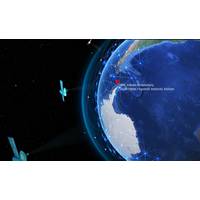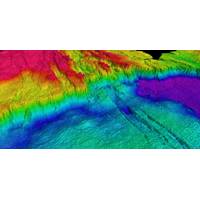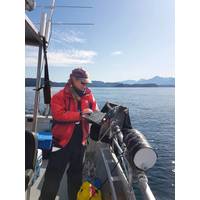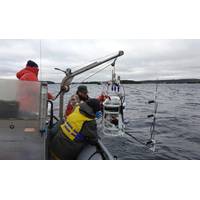
CalWave to Provide Wave Energy Tech for British Columbia Project
project is so far funded by a grant from TD Bank Group and the Clean Energy in Rural and Remote Communities Program within Natural Resources Canada.It comprises a consortium of other partners based across Canada, including the Pacific Research Institute for Marine Energy Discovery (PRIMED) at the University of Victoria, Barkley Project Group, Canpac Marine Services, and Environmental Dynamics.“This village was a trade hub, a place of great wealth sought after by our European visitors. Moving forward we want to establish Yuquot as a center once more, now in the context of setting examples for innovation

Canada and Spain Scientists Establish Antarctic Ocean Observatory
that will see Ocean Networks Canada (ONC) operating a subsea observatory at the Spanish Antarctic Station, providing year-round, near real-time data on ocean conditions there. This is the first time that ONC will extend its ocean monitoring outside Canadian waters.This partnership between ONC, a University of Victoria initiative, and the Spanish National Research Council (CSIC) will advance scientific understanding of one of the most underobserved parts of the planet, the Southern Ocean, or the Antarctic Ocean.The Spanish polar research vessel Hespérides that is transporting the ONC observatory

DISCOVERY: High-Res Mapping Tech Helps Find New Hydrothermal Vent Field
expedition began on 24 October 2023 in collaboration with the Galápagos National Park Directorate (GNPD), Charles Darwin Foundation, and the Ecuadorian Navy’s Oceanographic and Antarctic Institute (INOCAR).Other participating institutions included Memorial University of Newfoundland, University of Victoria, Dalhousie Press Release University, University of Ottawa, The Japan Agency for Marine-Earth Science and Technology, The United States Geological Survey, University of Quebec at Romouski, Kraken Robotics, and Fisheries and Oceans Canada.Anemone on volcanically formed geological structure

Ocean Dynamics Orders Deeper-rated Saab Seaeye Falcon ROV
Falcon because it can accommodate HD cameras and has the flexibility for integrating more advanced technologies.Chernov says the Falcon has proved to be reliable and able to stay working for longer than other underwater vehicles — and has better quality video.Ocean Dynamics supports the University of Victoria’s Ocean Networks Canada program of 50 instrumentation platforms and six observatories, plugged into over 900 kilometers of fiber-optic cable on the seafloor. The network provides marine scientists and coastal communities internet access to data for ocean management, disaster mitigation

ASL’s Fissel Named a Fellow of CMOS
The Vancouver Island CMOS Center and ASL co-hosted a reception and award presentation ceremony at the University of Victoria, University Club, last month to honor those that have contributed significant scientific achievements. At theceremony, ASL’s David Fissel was named a Fellow of the Canadian Meteorological and Oceanographic Society (CMOS).Fissel was educated at the University of British Columbia, earning a B.Sc. in Honors Physics in 1971 and an M.Sc. in Physical Oceanography in 1975. His graduate research, carried out under Professor Steve Pond, was followed, in 1975, by working as a

Preston Joins Global Diving & Salvage as Director of Marine Technology
operated underwater vehicle (ROV) services as part of the overall business strategies for both Seattle-based Global and sister company MER Diving.Preston brings to the role a background in mechanical engineering, nuclear physics, project management and entrepreneurship. She holds a BME from University of Victoria and a commercial diver certificate among numerous other certifications and achievements. Her career path includes organizational leadership roles at BC Hydro, BC Transit and Defense Construction Canada, and eight years as an engineer and supervisor at Triumf, Canada’s premier physics

Reidy Awarded NSERC Grant in Partnership with ASL to Measure Baleen Whale Prey in BC
The University of Victoria Ph.D. candidate Rhonda Reidy has recently received funding for her project “Modifying an Acoustic Zooplankton and Fish Profiler for quantitative spatial sampling of baleen whale prey in British Columbia”, co-supervised by Dr. Laura Cowen and Dr. Stephane Gauthier. This funding comes from an NSERC Alliance grant awarded to Laura Cowen. Reidy studies baleen whale foraging dynamics. North Pacific humpback whales, in particular, are increasing in abundance and, in BC, are increasingly struck by vessels and entangled in fishing gear. New tools are required to observe

Dalhousie University: Quiet Oceans Speak Volumes During Lockdown
listed on the endangered species list, like killer whales.David Barclay, an assistant professor in the Department of Oceanography, and researchers in his lab took advantage of the current lockdown to explore how the underwater soundscape has changed during the pandemic. Oceans Network Canada, a University of Victoria initiative that operates ocean observatories in the northeast Pacific Ocean and the Salish Sea, provided hydrophones that allowed Barclay and his team to analyse the noise environment of British Columbia’s coastal waters.The paper, recently accepted for publication in the Journal of

ASL Hires Dr. Asplin
, 2) momentum coupling of atmospheric forcing to ice and near-surface ocean regimes, and 3) wind-forced propagation of ocean waves into the periphery of the pack ice. Dr. Asplin followed this work with W. Garfield Weston Fellowship in Northern Research at the Department of Geography at the University of Victoria, where he investigated synoptic meteorological drivers of storm surge events in the western Canadian Arctic, including a traditional knowledge study through direct consultations with residents in three coastal communities in the Inuvialuit Settlement Region. Dr. Asplin completed a Ph



 February 2024
February 2024





